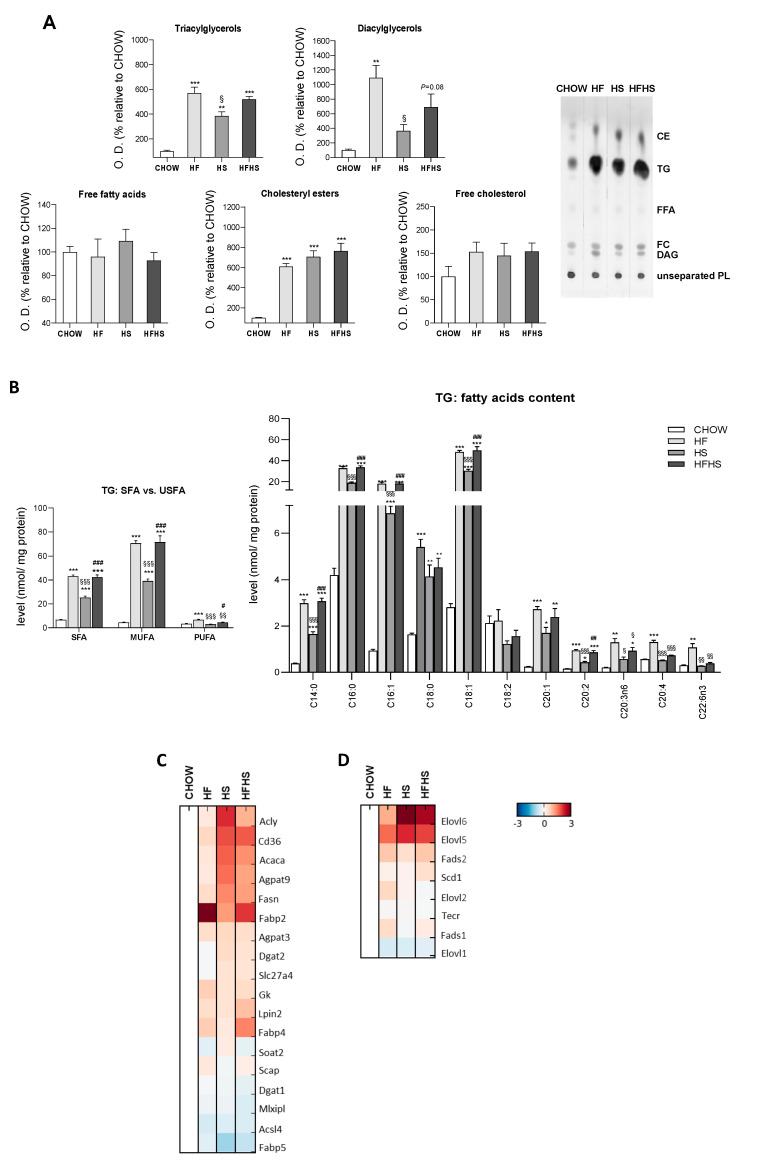Figure 3.
HF, HS and HFHS diets increase hepatic lipid accumulation in the form of TGs enriched in SFAs and MUFAs. (A) Optical density (arbitrary units) of hepatic tissue content of TGs, diacylglycerols, free FAs, CEs and free cholesterol and representative thin-layer chromatography image of a replicate showing all neutral lipid species (N = 4). (B) Levels of SFAs, MUFAs and PUFAs in the hepatic tissue TGs fraction and detailed analysis of FAs acyl chains in TGs (N = 4). (C) Proteomic analysis of protein levels involved in the de novo lipogenesis (DNL) pathway (N = 4). (D) Proteomic analysis of protein levels involved in the elongation and desaturation of FAs (N = 4). Blue represents decreased levels, and red represents increased levels (N = 4). All data are expressed as the mean ± SEM. (*) vs. the CHOW diet, (§) vs. the HF diet and (#) vs. the HS diet (P < 0.05); (**) vs. the CHOW diet, (§§) vs. the HF diet and (##) vs. the HS diet (P < 0.01); (***) vs. the CHOW diet, (§§§) vs. the HF diet and (###) vs. the HS diet (P < 0.001); P values were determined using one-way ANOVA followed by Bonferroni’s post hoc test. CE, cholesteryl ester; DG, diacylglycerol; FC, free cholesterol; FFA, free fatty acids; HF, high-fat; HFHS, high-fat plus high-sucrose; HS, high-sucrose; PL, phospholipid; PUFA, polyunsaturated fatty acid; SFA, saturated fatty acid; TG, triacylglycerol; USFA, unsaturated fatty acid.

